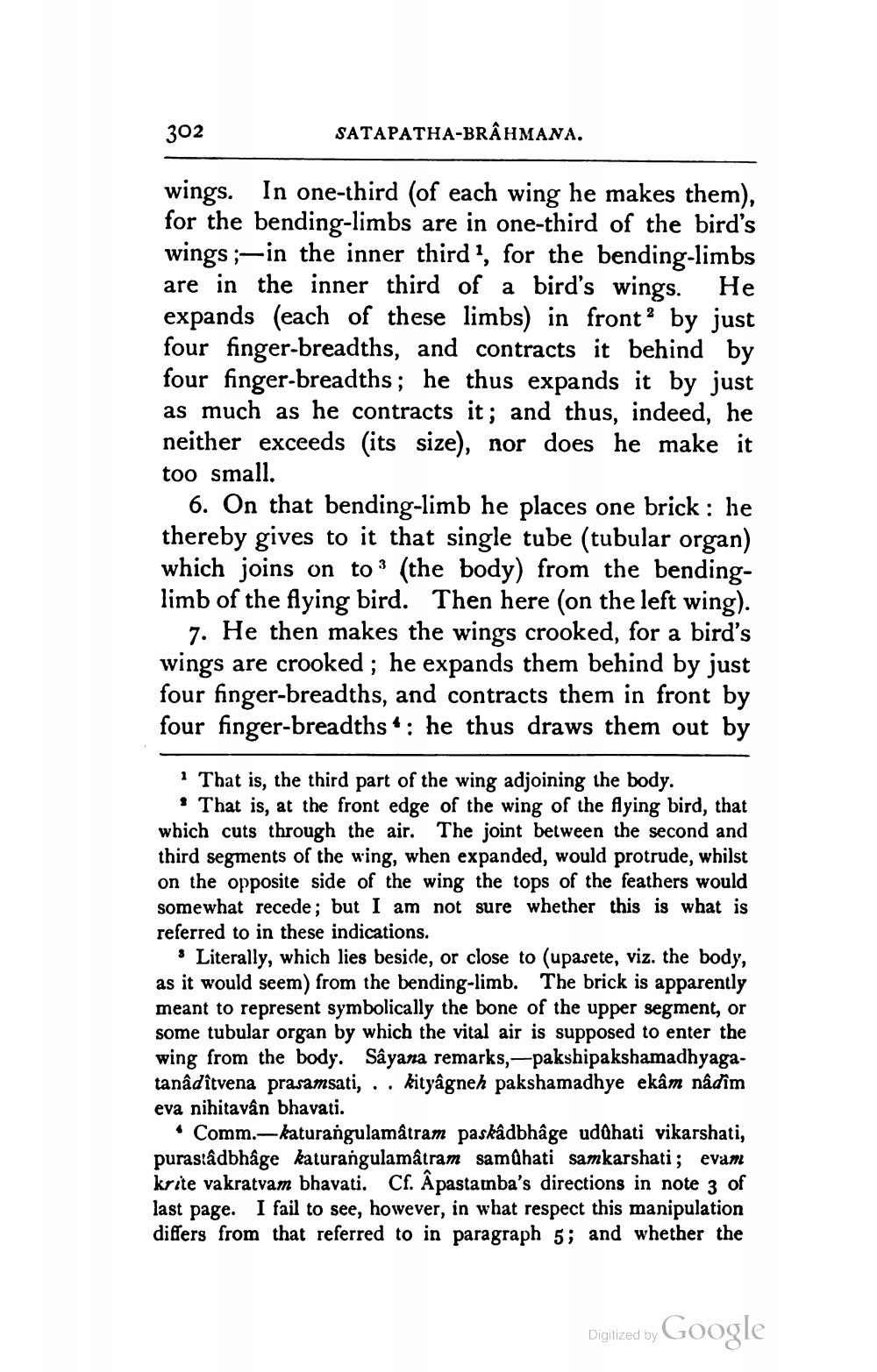________________
302
SATAPATHA-BRAHMANA.
wings. In one-third (of each wing he makes them), for the bending-limbs are in one-third of the bird's wings;—in the inner third?, for the bending-limbs are in the inner third of a bird's wings. He expands (each of these limbs) in front? by just four finger-breadths, and contracts it behind by four finger-breadths; he thus expands it by just as much as he contracts it; and thus, indeed, he neither exceeds (its size), nor does he make it too small.
6. On that bending-limb he places one brick : he thereby gives to it that single tube (tubular organ) which joins on to 3 (the body) from the bendinglimb of the flying bird. Then here (on the left wing).
7. He then makes the wings crooked, for a bird's wings are crooked; he expands them behind by just four finger-breadths, and contracts them in front by four finger-breadths +: he thus draws them out by
1 That is, the third part of the wing adjoining the body.
• That is, at the front edge of the wing of the flying bird, that which cuts through the air. The joint between the second and third segments of the wing, when expanded, would protrude, whilst on the opposite side of the wing the tops of the feathers would somewhat recede; but I am not sure whether this is what is referred to in these indications.
Literally, which lies beside, or close to (upasete, viz. the body, as it would seem) from the bending-limb. The brick is apparently meant to represent symbolically the bone of the upper segment, or some tubular organ by which the vital air is supposed to enter the wing from the body. Sâyana remarks,-pakshipakshamadhyagatanâditvena prasamsati, .. kityâgneh pakshamadhye ekâm nâdim eva nihitavân bhavati.
• Comm.-katurangulamâtram paskâdbhâge uddhati vikarshati, purastâdbhâge katurangulamâtram samdhati samkarshati; evam krite vakratvam bhavati. Cf. Â pastamba's directions in note 3 of last page. I fail to see, however, in what respect this manipulation differs from that referred to in paragraph 5; and whether the
Digitized by Google




